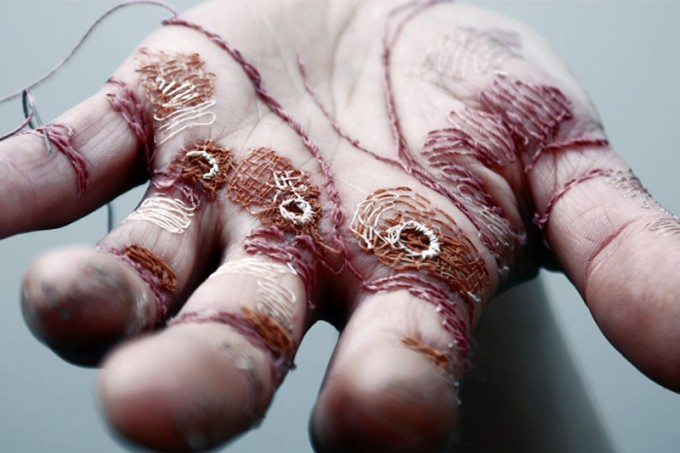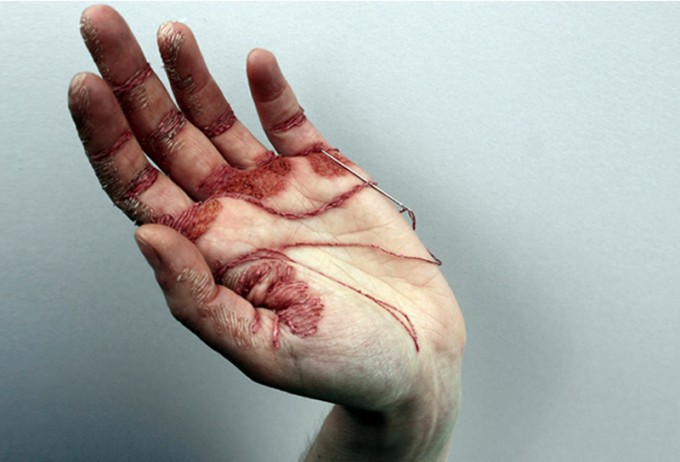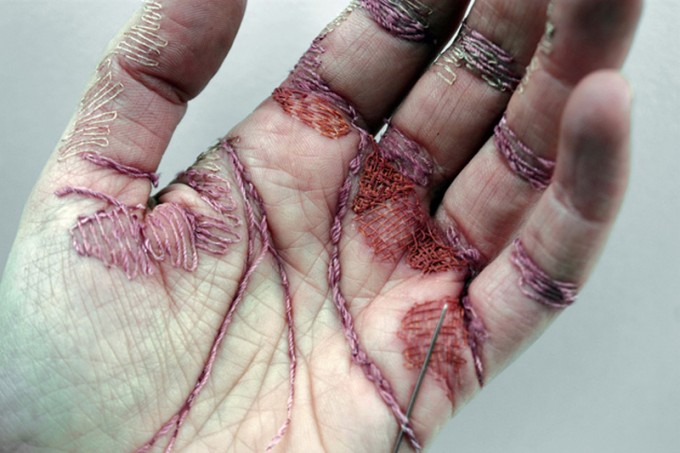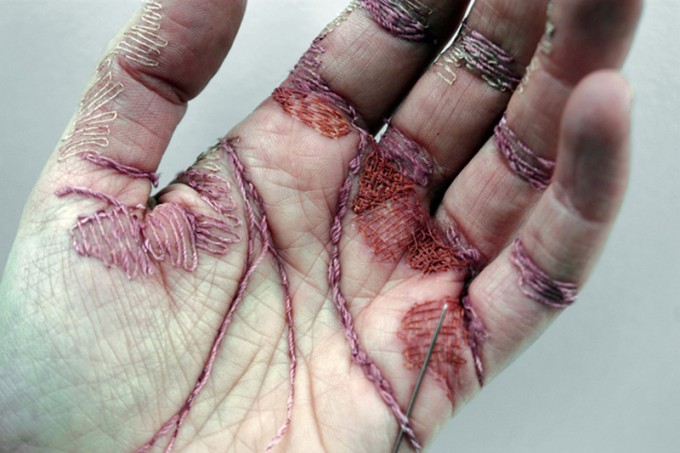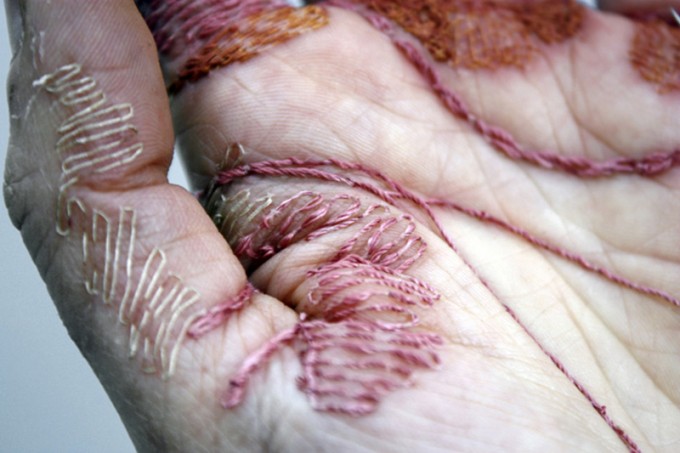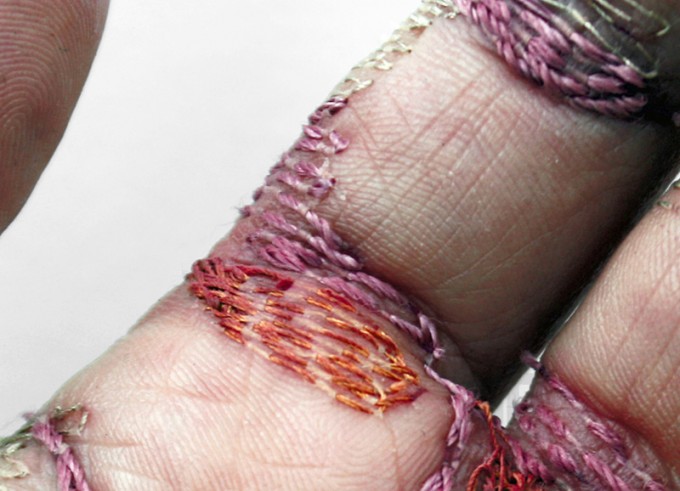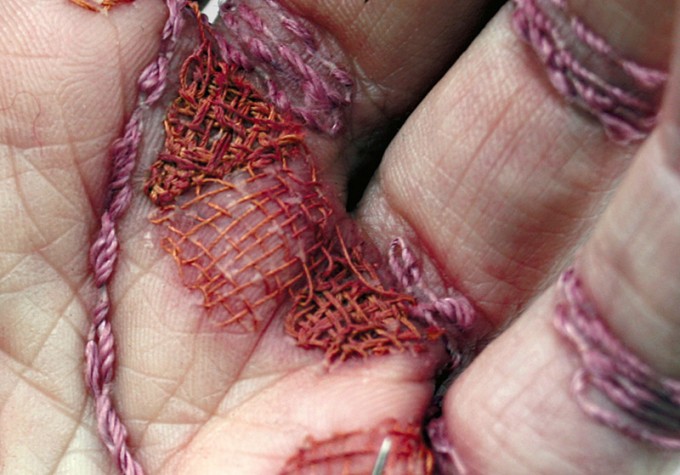London-based artist Eliza Bennett began by working in textiles and fashion design, and uses techniques from those realms on her own hands. Her skin becomes cloth, on which she stitches embroidered patterns that trace a narrative.
In “A Woman’s Work is Never Done,” she literally sews her own skin with needle and thread, a representation of just how hard women’s work really is.
A series of photographic works titled ‘A Woman’s Work is Never Done’ Using my own hand as a base material, I considered it a canvas upon which I stitched into the top layer of skin using thread to create the appearance of an incredibly work worn hand. By using the technique of embroidery, which is traditionally employed to represent femininity and applying it to the expression of its opposite, I hope to challenge the pre-conceived notion that ‘women’s work’ is light and easy. Aiming to represent the effects of hard work arising from employment in low paid ‘ancillary’ jobs, such as cleaning, caring and catering, all traditionally considered to be ‘women’s work’.
The technique, I recall first applying to my hand under a table during a home economics class in school. I was totally amazed to find that I could pass a needle under the top layers of skin without any pain, only a mild discomfort. As with many childhood whims it passed and I hadn’t thought any more about it until quite recently when I decided to apply the process to my hand to make it appear calloused and work worn like that of a manual labourer. Some viewers consider the piece to be a feminist protest, for me it’s about human value. After all, there are many men employed in caring, catering, cleaning etc… all jobs traditionally considered to be ‘women’s work’. Such work is invisible in the larger society, with ‘A woman’s work’ I aim to represent it.
